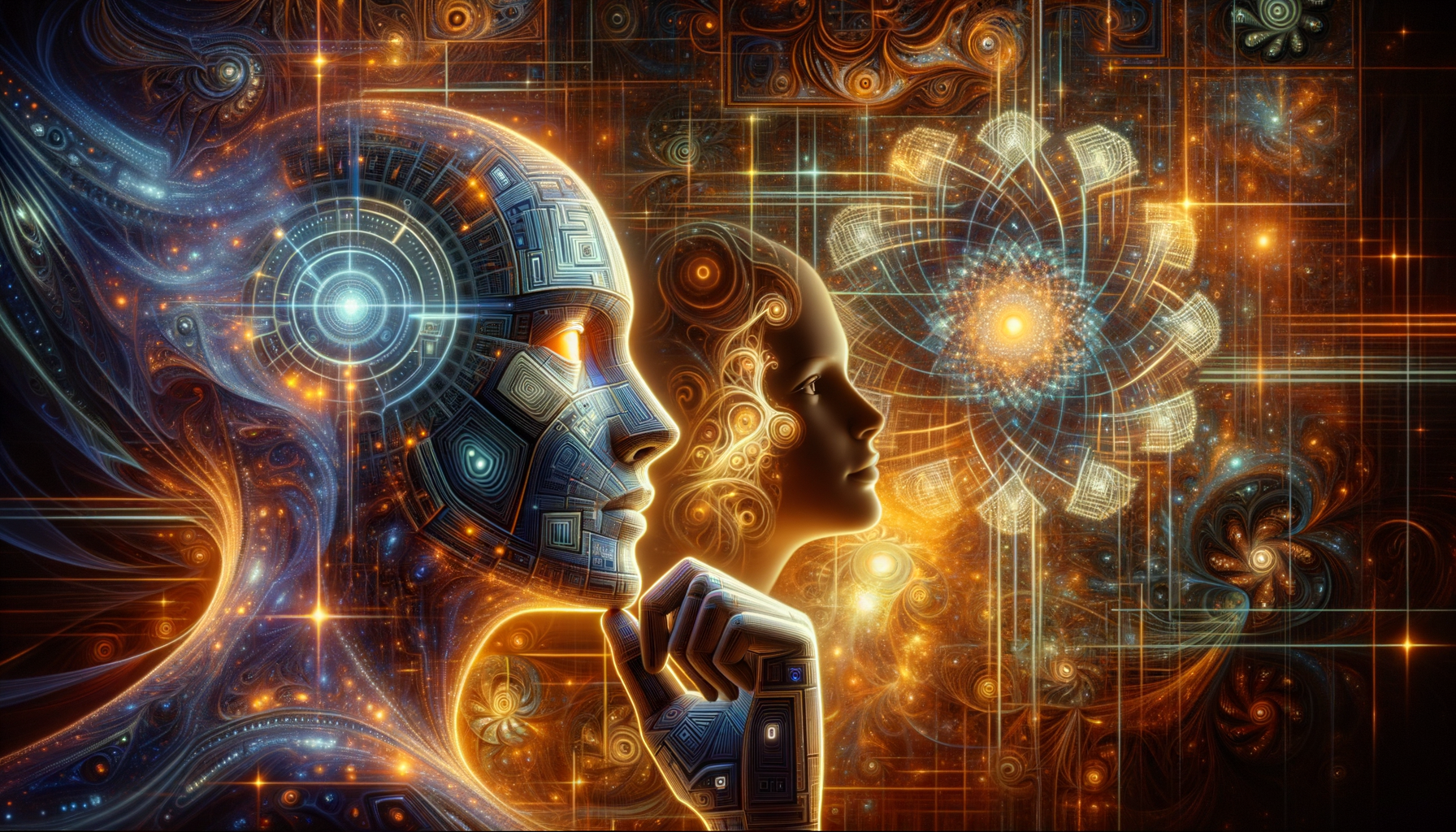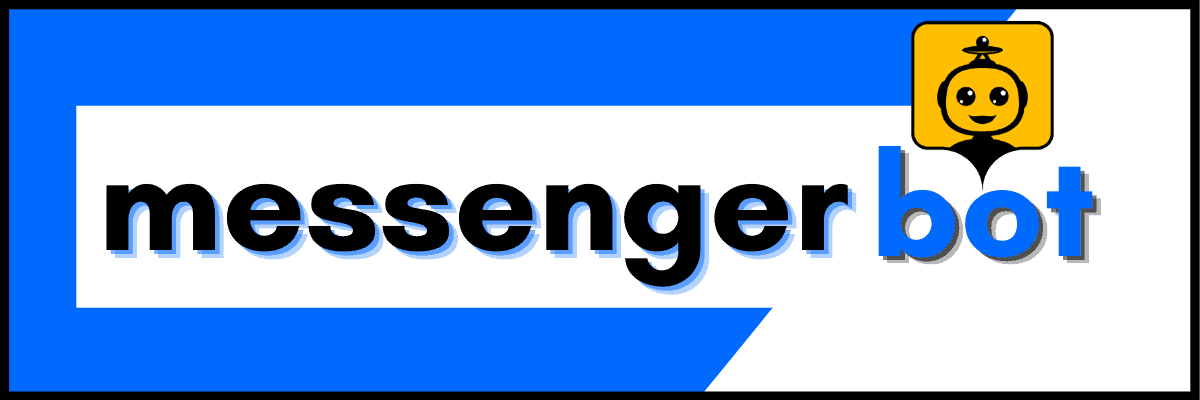In today’s fast-paced digital world, virtual assistants and chatbots have become indispensable tools for streamlining tasks and enhancing productivity. However, the terms “virtual assistant” and “chatbot” are often used interchangeably, leading to confusion about their distinct capabilities and functionalities. This article aims to navigate the nuances between virtual assistant chatbots and AI personal assistants, shedding light on their key differences, strengths, and limitations. By exploring the various facets of these technologies, readers will gain a deeper understanding of which solution best aligns with their specific needs, whether it’s automating routine tasks, enhancing customer service experiences, or leveraging advanced AI capabilities for more complex applications.
What is a Virtual Assistant Chatbot?
A) Definition and Explanation
A virtual assistant chatbot is an advanced artificial intelligence (AI) powered software application designed to simulate human-like conversations and provide personalized assistance to users through voice or text-based interfaces. These chatbots leverage natural language processing (NLP) and machine learning algorithms to understand user queries, extract relevant information, and formulate contextual responses.
Virtual assistant chatbots can be integrated into various platforms, such as websites, mobile apps, messaging platforms, and virtual assistants like Alexa or Siri. They are more advanced than traditional chatbots, which rely on pre-defined scripts and decision trees. Virtual assistant chatbots can handle complex queries, maintain context across multiple interactions, and perform tasks like scheduling appointments, providing recommendations, or executing transactions. Additionally, they can continuously learn and improve their responses based on user interactions and data analysis.
B) Key Features and Capabilities
Key features of virtual assistant chatbots include:
- Natural Language Understanding (NLU): Ability to comprehend and interpret human language, including slang, idioms, and context.
- Contextual Awareness: Maintaining conversational context and user preferences to provide relevant and personalized responses.
- Task Automation: Performing various tasks like booking reservations, making purchases, or retrieving information from databases.
- Multimodal Interaction: Supporting multiple input modes, such as voice, text, and touch, for seamless user experiences.
- Continuous Learning: Leveraging machine learning algorithms to improve performance over time based on user feedback and data.
Virtual assistant chatbots are widely used in customer service, e-commerce, healthcare, education, and various other industries to enhance user experiences, streamline operations, and provide 24/7 support. As AI technology advances, virtual assistant chatbots are becoming increasingly sophisticated, capable of handling more complex tasks and delivering more human-like interactions.
At Messenger Bot, we offer a cutting-edge virtual assistant chatbot platform that empowers businesses to create intelligent, conversational AI assistants tailored to their specific needs. Our platform leverages the latest advancements in natural language processing and machine learning to deliver seamless, personalized experiences to your customers across multiple channels.

Is Alexa a chatbot or virtual assistant?
A) Understanding Alexa’s functionality
Alexa, developed by Amazon, is a virtual assistant and not a chatbot. A virtual assistant is an AI-powered software agent designed to understand and respond to voice commands or text inputs, assisting users with various tasks like information retrieval, scheduling, and home automation. In contrast, a chatbot is a conversational AI focused on simulating human-like dialogue through text or voice interactions.
B) Differentiating chatbots from virtual assistants
While chatbots excel at natural language processing and can engage in open-ended conversations, virtual assistants like Alexa prioritize task completion and providing direct responses to user queries or commands. Alexa leverages natural language processing, speech recognition, and a vast knowledge base to interpret user requests, retrieve relevant information, and execute specific actions. It integrates with smart home devices, enabling voice control over lights, thermostats, and other connected appliances. Additionally, Alexa supports third-party skills, expanding its capabilities through custom voice apps developed by Amazon and external developers.
Is ChatGPT a chatbot or virtual assistant?
A) Exploring ChatGPT’s AI capabilities
ChatGPT, developed by OpenAI, is an advanced language model and conversational AI that falls into the category of a chatbot. While it possesses remarkable natural language processing capabilities and can engage in human-like dialogue, its primary focus is on generating contextual responses to user inputs rather than executing tasks or controlling devices like a virtual assistant.
B) Comparing to traditional chatbots and virtual assistants
Unlike traditional chatbots, which often rely on predefined scripts or decision trees, ChatGPT leverages deep learning and a vast training dataset to understand and respond to queries in a more natural and contextual manner. However, unlike virtual assistants like Alexa or Siri, ChatGPT is not designed for task execution or device control. Its strengths lie in language generation, information retrieval, and open-ended conversation.
While virtual assistants like Google Assistant and Apple’s Siri can also engage in conversational interactions, they are primarily built for executing commands, controlling smart home devices, and performing specific tasks like setting reminders or making calls. ChatGPT, on the other hand, excels at generating human-like responses, providing information, and engaging in creative writing or analysis.
III. Is ChatGPT a chatbot or virtual assistant?
A) Exploring ChatGPT’s AI capabilities
ChatGPT is a groundbreaking language model developed by OpenAI, blending the capabilities of a chatbot and a virtual assistant. Unlike traditional chatbots with limited conversational abilities, ChatGPT leverages advanced natural language processing and machine learning to engage in dynamic, context-aware dialogues across a wide range of topics.
Its architecture is based on the GPT (Generative Pre-trained Transformer) language model, which has been fine-tuned on a vast corpus of data, allowing it to generate human-like responses and provide informative, coherent answers. As an AI personal assistant, ChatGPT can assist users with various tasks, such as research, writing, analysis, and problem-solving. It can comprehend and respond to complex queries, provide explanations, offer suggestions, and even engage in creative writing or coding.
B) Comparing to traditional chatbots and virtual assistants
One of the key strengths of ChatGPT is its ability to understand and generate context-appropriate responses, allowing for natural and engaging conversations. It can follow up on previous statements, ask clarifying questions, and maintain coherence throughout the dialogue. This contextual awareness sets ChatGPT apart from traditional chatbots, which often struggle with maintaining conversational flow and understanding nuanced queries.
Additionally, ChatGPT can adapt its communication style and level of detail based on user preferences, making it a versatile and personalized virtual assistant. Furthermore, ChatGPT is constantly evolving and improving through ongoing training and updates from OpenAI. As more data is fed into the system, its knowledge base expands, and its capabilities continue to grow, making it an increasingly powerful and versatile AI assistant.
In contrast, traditional chatbots are often rule-based or rely on more basic natural language processing techniques, limiting their ability to engage in nuanced and contextual conversations. Similarly, while virtual assistants like Siri, Google Assistant, and Alexa can handle a wide range of tasks, they may not possess the same level of conversational fluency and contextual understanding as ChatGPT.
By combining the strengths of chatbots and virtual assistants, ChatGPT represents a significant advancement in AI-powered conversational capabilities, offering a more natural and intelligent interaction experience for users.
IV. Which is the best AI virtual assistant?
A) Popular AI virtual assistant options
When it comes to selecting the best AI virtual assistant, there is no one-size-fits-all solution. The most suitable option depends on your specific needs and preferences. However, some of the most popular and highly rated AI virtual assistants as of 2023 include:
- Claude (Anthropic) – A cutting-edge language model known for its advanced reasoning, ethical training, and versatile capabilities across various tasks.
- GPT-4 (OpenAI) – The latest iteration of OpenAI’s powerful language model, offering enhanced performance and multimodal capabilities.
- PalmAI (Anthropic) – A specialized AI assistant focused on open-ended analysis, problem-solving, and task assistance.
- Google Assistant – Google’s virtual assistant, integrating seamlessly with its ecosystem and excelling in voice interactions and smart home control.
- Amazon Alexa – A popular choice for smart home automation, with a vast skill library and compatibility with numerous IoT devices.
- Siri (Apple) – Apple’s virtual assistant, deeply integrated into its ecosystem, with strengths in natural language processing and device control.
- Microsoft Cortana – Microsoft’s AI assistant, offering productivity features and tight integration with Microsoft Office applications.
The “best” AI assistant for you depends on factors like intended use (e.g., productivity, smart home, entertainment), ecosystem compatibility, and personal preferences for features such as privacy, customization, and natural language understanding.
B) Evaluating based on specific needs
To determine the best AI virtual assistant for your needs, consider the following criteria:
- Intended Use: Identify your primary use case, whether it’s productivity, entertainment, smart home control, or general task assistance.
- Ecosystem Integration: If you’re heavily invested in a particular tech ecosystem (e.g., Apple, Google, Microsoft), choose an assistant that integrates seamlessly with your existing devices and services.
- Natural Language Processing: Evaluate the assistant’s ability to understand and respond to natural language queries accurately and contextually.
- Personalization and Customization: Consider options that allow you to customize the assistant’s behavior, voice, and responses to suit your preferences.
- Privacy and Security: Research the assistant’s privacy policies and data handling practices to ensure they align with your expectations.
- Skill and App Integration: For smart home and IoT use cases, assess the assistant’s compatibility with third-party devices and services.
By carefully evaluating your specific needs and priorities, you can identify the AI virtual assistant that best aligns with your requirements and provides the most value for your intended use cases.

V. What exactly does a virtual assistant do?
A) Common tasks and use cases
Virtual assistants, powered by artificial intelligence, are versatile tools designed to streamline and enhance various aspects of personal and professional life. They can assist with a wide range of tasks, including:
- Schedule management: Virtual assistants can manage calendars, set reminders, and coordinate appointments, ensuring you never miss an important event or deadline.
- Email organization: They can sort, prioritize, and even respond to emails based on predefined rules or commands, helping you stay on top of your inbox.
- Research and information gathering: Need data or insights on a specific topic? Virtual assistants can conduct online research, compile relevant information, and provide concise summaries.
- Task and project management: From creating to-do lists to tracking deadlines and providing progress updates, virtual assistants can help you stay organized and productive.
- Customer service and support: Many businesses leverage AI-powered virtual assistants to handle customer inquiries, provide product information, and resolve issues efficiently.
- Data entry and processing: Virtual assistants can input and organize data, generate reports, and maintain databases, streamlining administrative tasks.
- Travel planning: Need to book a flight, hotel, or rental car? Virtual assistants can handle travel arrangements and create detailed itineraries for you.
- E-commerce and online shopping: They can assist with product searches, comparisons, and purchases, making online shopping more convenient.
- Social media management: Virtual assistants can schedule posts, monitor engagement, and analyze metrics across various social media platforms.
B) Benefits of using a virtual assistant
Incorporating a virtual assistant into your daily routine or business operations can offer numerous benefits, including:
- Increased productivity: By automating repetitive tasks and streamlining workflows, virtual assistants free up valuable time, allowing you to focus on more important or creative endeavors.
- Enhanced organization: With their ability to manage schedules, emails, and tasks, virtual assistants help maintain order and prevent important details from slipping through the cracks.
- Improved customer service: AI-powered virtual assistants can provide 24/7 support, responding to customer inquiries promptly and consistently, leading to higher satisfaction rates.
- Cost-effective solutions: Compared to hiring full-time employees or outsourcing to human assistants, virtual assistants can be a more cost-effective solution, especially for small businesses or startups.
- Personalized assistance: Many virtual assistants can adapt to your preferences and learn from your interactions, providing a tailored experience that becomes more intuitive over time.
- Multilingual capabilities: Some advanced virtual assistants like Brain Pod AI can communicate in multiple languages, making them invaluable for businesses with a global presence or individuals who frequently interact with diverse linguistic groups.
As AI technology continues to evolve, virtual assistants are becoming increasingly sophisticated, taking on more complex tasks and offering more natural and intuitive interactions. By leveraging these powerful tools, individuals and businesses can streamline operations, boost productivity, and ultimately achieve greater success in an ever-changing digital landscape.
VI. What does a virtual chat assistant do?
A. Functionality of chat-based virtual assistants
A virtual chat assistant, or chatbot, is an AI-powered conversational interface designed to simulate human-like interactions through text or voice channels. These intelligent virtual assistants leverage advanced technologies like natural language processing (NLP) and machine learning to understand user queries, retrieve relevant information, and provide contextual responses.
At their core, virtual chat assistants aim to enhance the user experience by offering seamless and efficient communication. Their primary functions include:
- Customer Support: Providing instant assistance to customers by answering common inquiries, resolving issues, and guiding them through processes related to products or services. This helps reduce wait times and improves customer satisfaction.
- Lead Generation: Engaging with website visitors, gathering information, and qualifying leads for sales teams, enhancing conversion rates and streamlining the sales process.
- Information Retrieval: Serving as a knowledgebase by providing relevant information, tutorials, or FAQs to users based on their queries.
- Task Automation: Handling routine tasks such as scheduling appointments, processing orders, or conducting surveys, freeing up human resources for more complex tasks.
- Personalized Interactions: Utilizing NLP and machine learning to understand user intent, provide personalized responses, and offer tailored recommendations or suggestions.
Virtual chat assistants can be integrated into various platforms, including websites, mobile apps, messaging apps (e.g., Facebook Messenger, WhatsApp), and virtual assistants like Alexa or Google Assistant. Their 24/7 availability and scalability enable them to handle multiple conversations simultaneously, providing efficient and consistent support.
B. Advantages over traditional customer service
Compared to traditional customer service methods, virtual chat assistants offer several advantages:
- Instant Responsiveness: Chatbots can respond to inquiries instantly, eliminating the need for customers to wait on hold or for a representative to become available.
- Cost-Effectiveness: Implementing chatbots can significantly reduce operational costs associated with human customer service agents, making it a cost-effective solution for businesses.
- Scalability: Unlike human agents, chatbots can handle an unlimited number of conversations simultaneously, making them highly scalable for businesses with high customer volumes.
- Consistent Experience: Chatbots provide consistent responses based on their programming, ensuring a uniform experience for all customers, regardless of the time or volume of inquiries.
- Multilingual Support: Many chatbots can communicate in multiple languages, enabling businesses to cater to a global customer base without language barriers.
While virtual chat assistants excel at handling routine inquiries and tasks, they can also be integrated with human agents for more complex issues, creating a seamless omnichannel experience. As AI and conversational AI technologies continue to advance, chatbots are becoming increasingly sophisticated, offering a blend of efficiency and personalized support.
VII. Virtual assistant chatbot free options
A) Evaluating free virtual assistant chatbots
In today’s fast-paced digital world, businesses are increasingly embracing virtual assistant chatbots to streamline customer interactions and improve operational efficiency. While many premium solutions offer advanced features, there are also several free virtual assistant chatbot options available that can provide valuable functionality without breaking the bank.
One popular free virtual assistant chatbot is Brain Pod AI. This AI-powered platform offers a user-friendly chatbot builder, allowing businesses to create and deploy conversational AI assistants without coding expertise. Brain Pod AI’s chatbots can handle various tasks, such as answering frequently asked questions, providing product recommendations, and guiding users through purchase processes.
Another notable free option is Google’s Dialogflow, which provides a comprehensive platform for building and integrating conversational interfaces. Dialogflow’s natural language processing capabilities enable chatbots to understand and respond to user queries in a more human-like manner. While the free version has limitations, it can be a valuable tool for small businesses or individuals looking to experiment with chatbot technology.
For businesses seeking a more comprehensive free solution, IBM Watson Assistant offers a powerful virtual agent platform with advanced natural language processing capabilities. Watson Assistant can be trained to understand and respond to customer inquiries across various industries and use cases, making it a versatile option for businesses of all sizes.
B) Limitations and considerations
While free virtual assistant chatbots can be an attractive option, it’s essential to understand their limitations and considerations. Most free offerings have restrictions on features, integrations, and scalability, which may hinder their effectiveness as your business grows.
One common limitation of free chatbots is the lack of advanced analytics and reporting capabilities. Premium solutions often provide detailed insights into user interactions, conversation flows, and bot performance, which can be invaluable for optimizing and improving the chatbot experience.
Additionally, free chatbots may have limited support for integrations with third-party systems, such as customer relationship management (CRM) platforms or e-commerce solutions. These integrations can be crucial for seamless data exchange and providing personalized experiences to customers.
It’s also important to consider the level of customization and branding options offered by free virtual assistant chatbots. While some may allow basic customization, premium solutions often provide more extensive branding and personalization capabilities, ensuring a consistent and cohesive brand experience for customers.
When evaluating free virtual assistant chatbots, it’s essential to carefully assess your business requirements, anticipated growth, and the long-term scalability of the solution. While free options can be a great starting point, as your business expands, you may need to consider upgrading to a premium solution that can better meet your evolving needs and provide a more robust and feature-rich chatbot experience.




